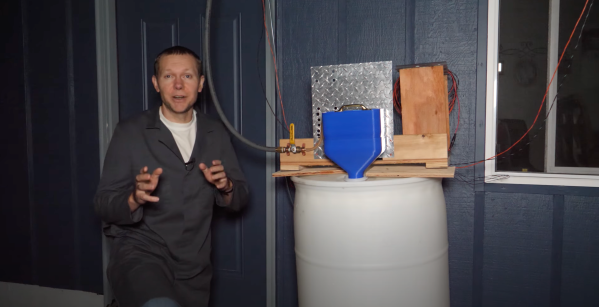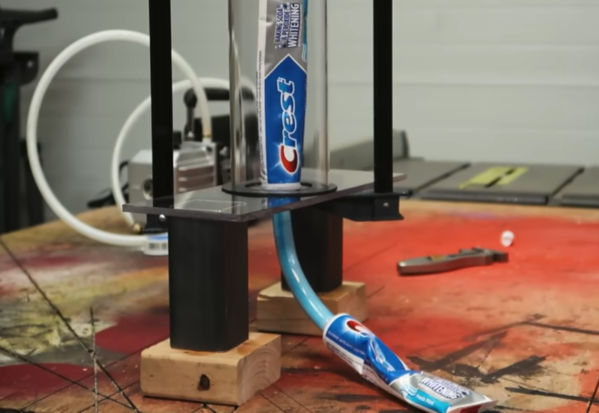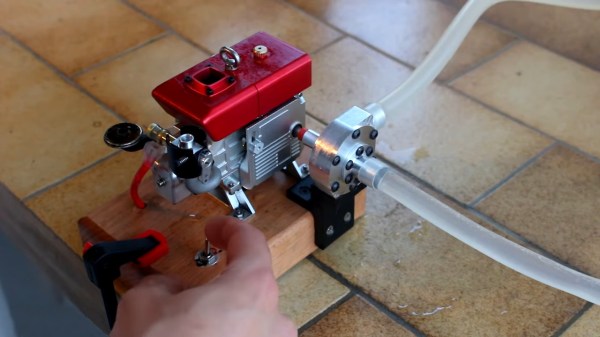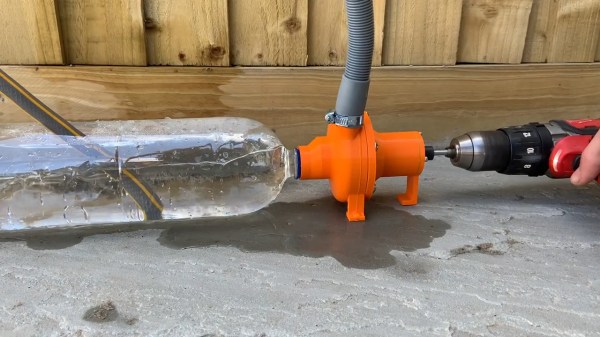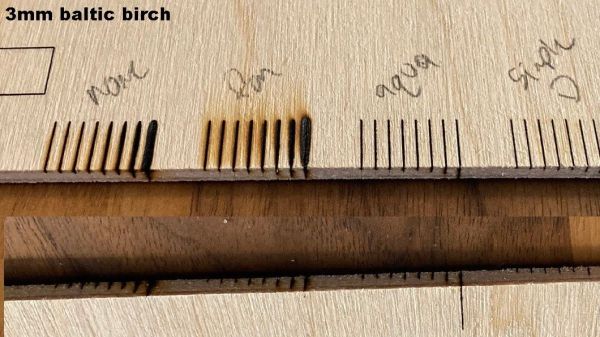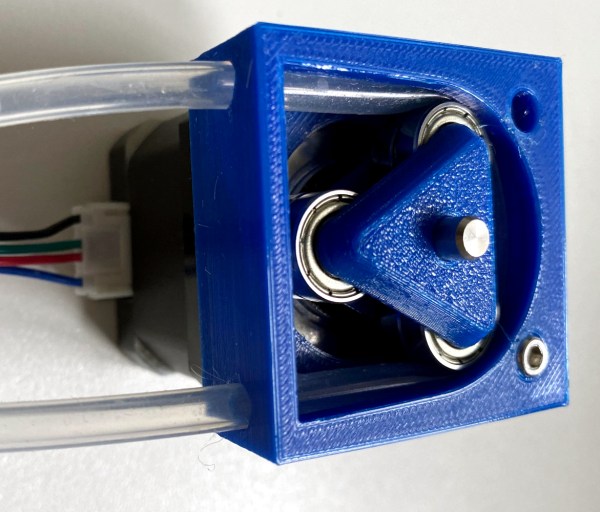I’ve stated it before on Hackaday but one of the most interesting engineering challenges posed to me this year was “how could you store enough energy to power a decent portion of a home for several hours without using batteries, all while staying within the size of a typical suburban plot?” [Quint Builds] attempts something up that alley by using solar power to pump water up onto his roof and later releasing it for power generation. (Video, embedded below.)
Earlier [Quint] had built a water collecting system using his gutters and a bell siphon but wasn’t satisfied with the overall power output. Using the turbine he had created for that system, he put a 55-gallon drum on top of his roof with the help of some supporting structures. We’d like to advise the public to consult a professional before adding a large heavy weight on top of your roof, but [Quint] forges ahead after studying his trusses and determining it to be a risk he is willing to take. A solar panel runs a small pump that pumps water from a reservoir up to the top of the roof when the sun shines with a float switch in the roof barrel stopping the motor once it’s full. A valve at the bottom allows water to spin the turbine and fill back into the bottom reservoir, forming a closed loop. There were a few snags along the way with prototype circuits not being fully contacted and the motor needing water cooling, an issue fixed by a custom CNC’d heat sink. The fixes for the various issues are almost as entertaining to see as the actual system itself.
It’s incredible to see lights come on powered by water alone but also sobering to realize just how much water you’d need to power a typical home. Perhaps if [Quint] upgrades, he can swap out the small motor for a larger 3D printed water pump.

